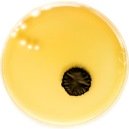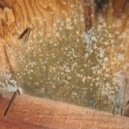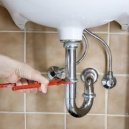Find a pre-screened local mold removal specialist Free Estimate
Find a Mold Specialist Now
Click or Call, Toll-Free 24/7
Dangers of Mold in Your Home
What are the dangers of mold in your home and how should these dangers be addressed? As molds grow and their colonies develop, they release toxins and other byproducts into your indoor environment. These mold toxins and byproducts can be the direct cause of many diverse health issues in humans and animals alike.
Your first question may be just where did all of this mold come from? Usually, mold is a result of unwanted moisture in your home. This moisture can result from slow plumbing leaks, a major water loss due to flooding, broken pipes, malfunctioning appliances, etc. The moisture could also be the result of just abnormally high humidity problems or unaddressed dampness issues in a basement or crawlspace.
Every living thing on earth requires water, and mold is no exception. However mold, unlike almost every other form of plant and animal life, requires no light source. In fact, for mold, the less light the better. Whenever uncontrolled water enters into a building the potential for microbial growth explodes.
How to Recognize a Mold Problem
Many people would say, “That’s easy, I can see it.” And while this can be true if the mold problem becomes large enough or isn’t hidden inside wall cavities or under floors and such, one of the easiest ways to detect mold early is to smell it. Those earthy or musty odors can be detected by our noses and are sometimes the first thing you will detect. The odors are byproducts of mold’s metabolism, and are referred to as Microbiological Volatile Organic Compounds (MVOCs). Does breathing in the actual MOVCs cause harm? The medical community is still undecided on that issue.
The next way a mold problem is recognized is the obvious one; you can see it. Many times it isn’t recognized as a mold problem until the mold can be seen.
Health Effects of Mold
There are two terms for buildings that have been contaminated by microbial growth:
- Sick Building Syndrome (SBS) – unexplained health symptoms with no specific illnesses identified.
- Building Related Illness (BRI) – a medically diagnosed sickness from being in a building.
The greatest dangers of exposure to mold are the serious adverse effects it can have on your health and on the health of your family members. Mold-related health problems range from a runny nose or cough to life-threatening pneumonia or bleeding in the lungs.
While most people associate black mold exposure as being the most problematic, all types of mold in your home can cause health issues and needs to be removed. Potential health problems caused by mold exposure in the home include:
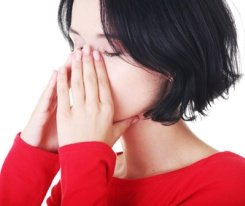
- Runny nose
- Cough
- Sneezing
- Allergic reactions
- Hives
- Rash
- Trouble breathing
- Sinus infection
- Asthma attacks
- Bronchitis
- Pneumonia
- Bleeding in the lungs
- Headaches
- Sore throat
- Fatigue
- Depression
- Joint pain
- Trouble concentrating
The dangers of mold are greatest for infants and young children, pregnant women, elderly people, and those individuals with certain pre-existing health problems. For instance, those with respiratory disorders like asthma, chronic obstructive pulmonary disease (COPD), and emphysema will likely suffer more from the effects of mold. Those individuals with compromised immune systems, like people with human immunodeficiency virus (HIV) or acquired immune deficiency syndrome (AIDS) or people undergoing chemotherapy for cancer, are at an even greater risk of mold-related illnesses.
Dangers of Mold in Your Home on Pets
While we understand that mold can have negative health effects for people, what we sometimes don’t consider is that pets are not immune to the dangers of mold. Mold can be just as dangerous to your pets as it is to you. Younger pets, like puppies and kittens, are more susceptible to mold and mold spores for the same reasons that infants are. Their immune systems are not fully developed, which limits their bodies response to the exposure to mold.
Some signs that your pets are being negatively affected by mold include:
- Excessive scratching (in the absence of fleas)
- Constant licking or chewing on their paws
- Skin rashes
- Runny eyes
- Ear infections (the ears may have a yeasty smell if you sniff them closely)
- Lethargy or fatigue
In addition to the appropriate veterinary treatment, it may be necessary to remove your pet from the home until the mold problem can be dealt with. Without proper treatment, pets can even die from prolonged exposure to household mold.
Relief From the Dangers of Mold in Your Home Is Available
If you see mold growing in your home, or detect a musty odor that has no visible cause or reason, the only way to avoid the dangers that mold can cause is to take immediate action. If you see the mold, you can always attempt to remove it yourself, but successful mold remediation can be hard to accomplish without the proper training and equipment. If you can smell an unidentifiable odor but cannot discover its source, you should seek professional assistance.
There are certified mold remediation professionals available in your area. They will come to your home, do a detailed inspection of your issue with mold, and offer a solution for your problem. Their inspection and remediation estimate are free of charge, with no obligation on your part. In today’s world it is rare to be able to get detailed advice from certified professionals at absolutely no cost. If you know, or think, you have a mold problem, you should take advantage of this free opportunity. Your mold problem will only get worse if you delay.
Return From Dangers Of Mold To Home Page
Free Home Inspection By A Mold Removal Specialist
Search This Website
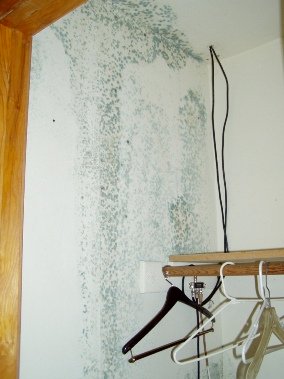 Mold in closet from leak
Mold in closet from leakRecent Articles
-
See Our 5 Recommended Mold Removal Companies in Covington, KY
Apr 16, 25 12:59 PM
-
See Our 5 Recommended Mold Removal Companies in Wheaton, IL
Jun 20, 24 10:33 AM
-
See Our 5 Recommended Mold Removal Companies in Aberdeen, SD
Oct 08, 21 04:05 PM
